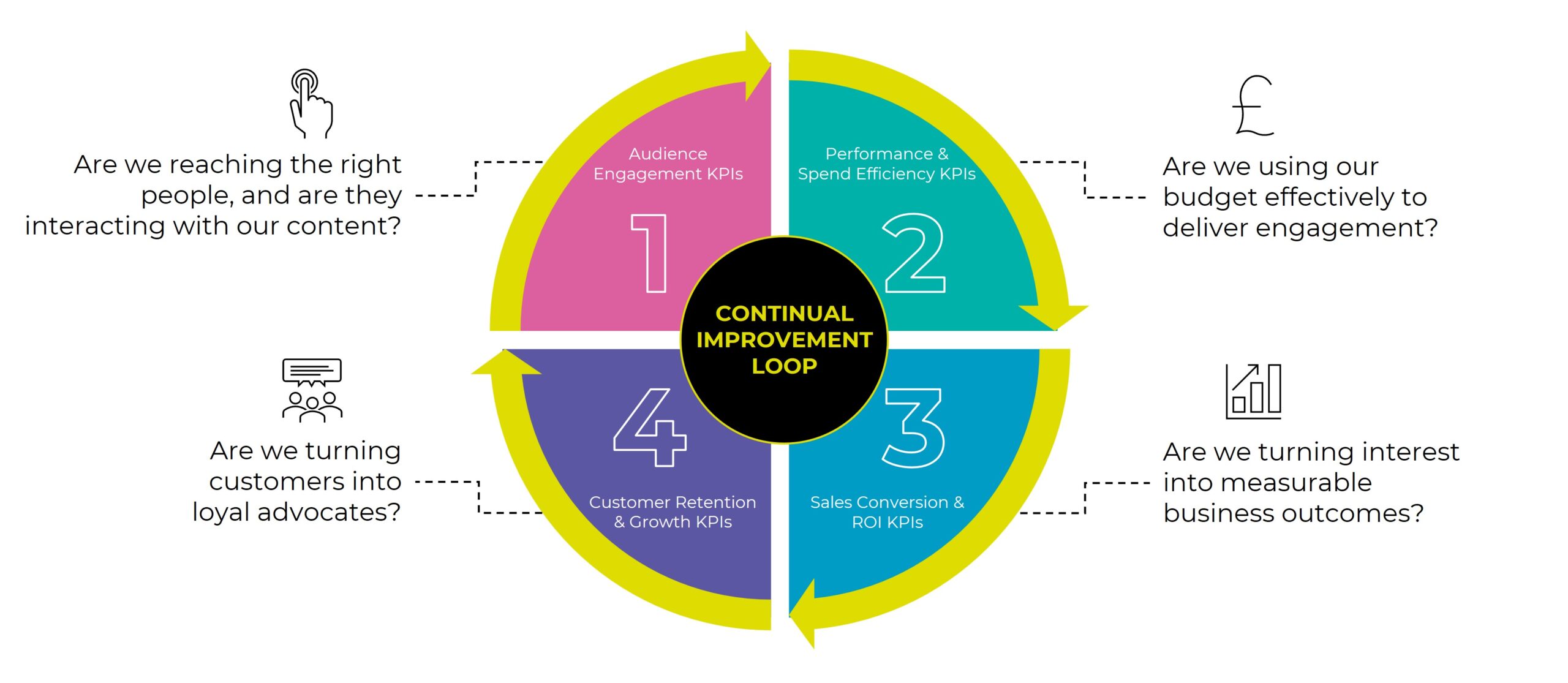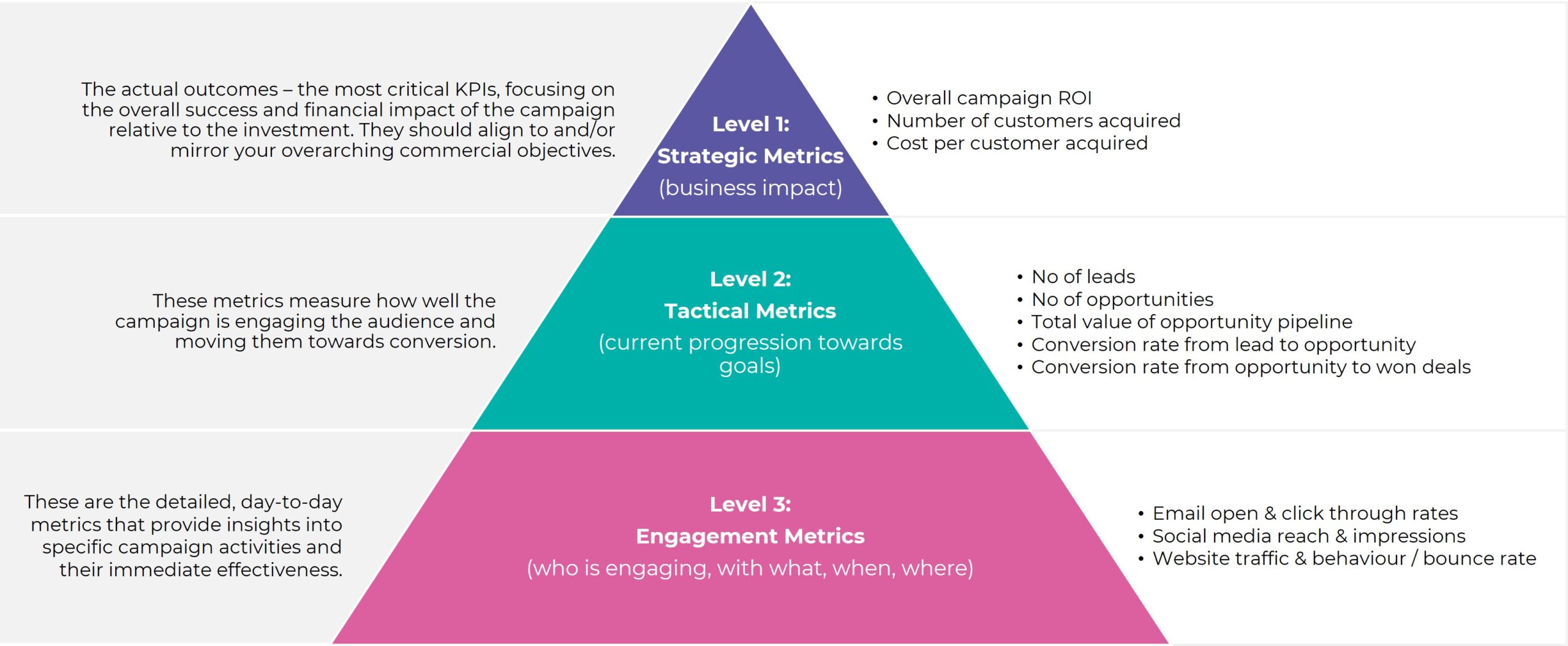

Imagine this:
You’re at a crossroads in your life. Maybe you’re going for that work promotion, weighing up whether you want to move out of town, or deciding whether you just want to pack it all in and travel the world.
You wouldn’t just go and ask a Magic 8 Ball to tell you what to do, would you? At the very least you’d consider your options before taking the plunge (or maybe you wouldn’t, you big old free spirit you).
It’s the same with your business. Perhaps you want to bring on more customers. Maybe your business is growing and you want to expand your team. It could be you want to find out why your prospects keep ghosting you.
Making business decisions without a clear understanding of how your business is performing is a little like asking a Magic 8 Ball for the answer to life’s big questions – hazy, inconclusive and probably not particularly helpful. You need to have a clear set of business metrics (which reflect your commercial objectives), to help support any decision you make. But crucially, you need to first track them, then report on them, then understand them.
And we all know that can be easier said than done.
Handily, we have the perfect person on hand to help. Today we’re sitting down with Head of Planning (and analytics genius) Chris Parsons, to arm you with the key performance know-how you need to make strategic business decisions and decide where your business will go next.
KPI is a big old acronym isn’t it? What do we mean by it?
Your KPIs (or Key Performance Indicators) are distilled pieces of data about your audience’s behaviour or what’s happening in your business. You’ll define your KPIs on Day 1 of anything you set out to do – whether it’s your business plan, your marketing campaign or your financial year. You’ll put a number against them, then you’ll return to them regularly to benchmark your success.
If you ask your team what activities they’re working on, you’ll likely get a range of descriptive responses about a set of numbers or figures, complete with reasoning and background. Of course, that kind of detail has its place.
But KPIs are distilled facts or numbers, so they cut through the noise and reveal the raw facts – they tell you what’s happened, without the need for explanation or conversation.
Put simply, a KPI shows whether the team’s activities, or company’s activities as a whole, are delivering results.
So what are the differences between KPIs and metrics?
All KPIs are metrics, but not all metrics are KPIs.
Metrics are measurable values used to track various activity (such as sales & marketing), while key performance indicators are the specific metrics that directly reflect progress towards strategic goals – the ‘critical few’ that matter most to success.
Think of metrics as many data points on a dashboard, and KPIs as the key gauges you watch closely to stay on track.
And engagement metrics and tactical metrics?
Engagement metrics are the detailed stuff – the click throughs, the impressions etc. The senior leadership team don’t need to see these granular metrics. However, they are essential for the teams ‘on the ground’ running the day-to-day activity (such as sales and marketing). They need to monitor, measure and act upon them on a daily basis, so they are essential for your business growth.
Tactical metrics are less about what’s going on, more about the outcome. They help you decide whether or not you are going to do it all again.
So these metrics will mean different things to different people in the business?
Absolutely. Marketing teams need to care about engagement metrics, because these are the ones you can dial up and down to get incrementally better results. If you’re getting low click-throughs, you can test CTAs to see which one works best. And there are a wide body of engagement metrics, so you can analyse them to see where you can make those changes. It’s this continual feedback loop that helps make those improvements.

When you go higher up the ladder, where your department heads are, you’ll be distilling these engagement metrics into a smaller group of metrics – your tactical metrics – to make sure your business plan/new campaign/financial plan is working.
And finally, these metrics get distilled even further when you get to the top of the pyramid – to your business leader, CFOs etc. The most important information they need to know is that the business is moving forward and growing, they don’t want to get bogged down in the granular detail.




